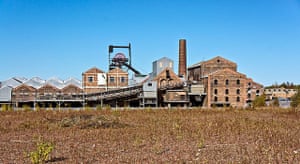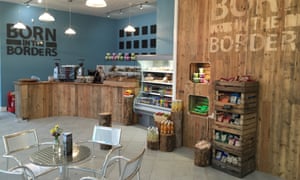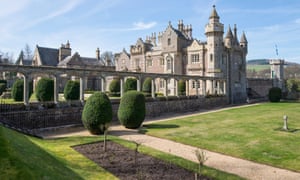If you didn’t win a Willy Wonka-esque Golden Ticket in the recent competition, you won’t be aboard the first departure of the Borders Railway train on Saturday. Normal (paying) customers can travel on the longest new domestic line constructed in a century – from Sunday.
To celebrate the opening, three VIP trains will run on Saturday, between stations decked out with bunting, bands and marquees … A fair bit of fanfare, with the Queen officially opening the line on 9 September. The lucky passengers will be those who found a golden ticket inside special chocolate bars created by local chocolatier Cocoa Black.
The Borders landscape may be gently undulating, but its history is every bit as dramatic as that of the north. The border between England and Scotland has seen its share of bloody battles, and there are more impregnable-looking castles than you can toss a caber at – as well as Georgian gems that wouldn’t look out of place in a Jane Austen dramatisation. Architect Robert Adam completed honey-hued Mellerstain House, and his father William designed grand Floors Castle.
The line brings 1,500 miles of walking trails within reach, from long-distance hikes such as the Southern Upland Way to shorter rambles and also cycling routes, including the 250-mile Borderloop. The area is also known for the spectacular ruins of four great 12th-century abbeys – Dryburgh, Melrose, Jedburgh and Kelso – now also linked by cycling and walking routes. The Borders Abbeys Way is a picture-postcard 64-mile walking route running through dappled woodland, along the banks of the salmon-rich Tweed and across gently rolling farmland, punctuated by the crumbling ecclesiastical ruins.
The historical highlights aren’t all so ancient, however. Newtongrange station, now just 20 minutes from Edinburgh, is connected by a walkway to the National Mining Museum. This is on the site of the 1890 Lady Victoria Colliery, with an impressive 500-metre shaft and a winding tower powered by Scotland’s largest steam engine.
The region is also a mountain-biking hot spot. From Galashiels it’s a half-hour bus ride to Innerleithen for some of Scotland’s best mountain biking, at the Glentress Forest centre, with trails for all grades. Galashiels is also close to Traquair House, one of the oldest stately homes in Scotland. Dating from 1107, it is charmingly ramshackle and has its own brewery.
Melrose itself is the prettiest of the little Borders towns, with chic shops, cosy cafes and delis to mooch around. Its abbey ruins are rose-tinged – and Robert the Bruce’s heart is buried there.
The Buccleuch Arms in St Boswells won Scottish Inn of the Year 2015: it has antler chandeliers and signature steaks, from feather to thick rib. Round the corner, bookshop-cafe-deli the Main Street Trading Company is great for a rummage.
The grand baronial mansion Scott designed has an armour-lined entrance hall, a library with 9,000 rare volumes, and an exhibition centre with a moving documentary. The novelist died here in 1832 and is buried in the most hauntingly beautiful of Borders abbeys, Dryburgh, among gnarled yews and cedars of Lebanon said to have been planted by Crusaders. It’s a fitting end to a trip on the revamped Waverley Line – named, of course, after Scott’s famous series of novels

 From 10 September, and on Wednesdays, Thursdays and Sundays for the next six weeks, special
From 10 September, and on Wednesdays, Thursdays and Sundays for the next six weeks, special 













0 comments:
Post a Comment